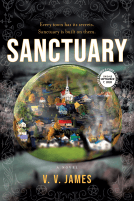Corpus Hermeticum (1st-3rd centuries CE), Anon
These mysterious ‘wisdom texts’, written in Greek and attributed to an ancient Egyptian sage Hermes Trismegistus, could claim to be foundational to both Western magic and science! Their huge influence followed their rediscovery and translation during the Italian renaissance, and the hermetic idea of controlling nature by occult experimentation inspired figures as varied as Italian heretic Giordano Bruno, English scientist Isaac Newton, and American essayist Ralph Waldo Emerson.
Lacnunga (10th-11th centuries CE), Anon
Lacnunga, a 10th-century Anglo-Saxon text, is ostensibly a collection of medical remedies, rather than a magical text, demonstrating once again the strange synergy between witchcraft and science. One of Lacnunga’s most famous rituals, the ‘Nine Herbs Charm’, involves not just herbology, but also incantations and the application of a rather disgusting paste of soap, apple juice, ashes and egg.
The Long Lost Friend (1820), Johann Georg Hohman
Hohman’s The Long Lost Friend showed the integration of German folk magic into the Pennsylvania Dutch (or Deutsch, ie. German) community in North America. Just like the Lacnunga of nearly a thousand years earlier, Hohman’s book was mostly recipes and healing prescriptions, but it also included charms to make bullets hit their mark and spells to catch thieves.
Aradia, or The Gospel of the Witches (1899), ‘Maddalena’/Charles Godfrey Leland
Leland, a wealthy white Pennsylvanian, was piqued with curiosity about witchcraft by the tales of folk magic he heard as a child from his family’s Irish and African-American employees. Late in life he moved to Florence, Italy, and studied folklore. At the age of 75 he published a book, Aradia, which claimed to be the translation of a historical book of magic circulated in secret by Italian witches, shared with him by a woman he named Maddalena. To this day, no-one knows if the text was genuine, was made up by ‘Maddalena’ – or perhaps concocted by Leland himself!
The Witch-Cult in Western Europe (1921), Margaret Murray
Murray was a British Egyptologist and archaeologist, prevented from conducting field work by the outbreak of the First World War. She used the time instead to study medieval witchcraft. Heavily influenced by James Fraser’s The Golden Bough, which argued that a lost ancient fertility cult was the source of mythic and ritual archetypes, Murray came to believe that European witchcraft, too, represented a survival of this fertility religion – until persecution destroyed it. Her 1921 study won wide acceptance … until a new wave of historians in the 1960s discovered just how misleading Murray’s use of historical sources had been.
Lolly Willowes (1926), Sylvia Townsend Warner
The contemporary association between witchcraft and feminism arguably begins in this gentle but incisive tale of English spinster Laura ‘Lolly’ Willowes, who evades her family’s efforts to marry her off or make her live in dependency, by moving to the countryside – and entering into a pact with the devil! Its message of female empowerment is still hugely resonant today. Author Warner was a trailblazing queer woman and progressive campaigner, who in 1930 set up home with her female lover, poet Valentine Ackland (a partnership that lasted till Ackland’s death four decades later), and her spirit shines through in Lolly’s tale.
High Magick’s Aid (1949), Gerald Gardner
This eccentric novel is our first glimpse of what would become modern Wicca. The controversial Gerald Gardner, a retired British colonial administrator and nudist, claimed to have been initiated into a coven of witches in England’s New Forest (actually one of the last surviving areas of ancient woodland in the UK). He insisted that their rites represented a direct survival of witchcraft traditions from before the 17th-century British witch-persecutions and the Pilgrim exodus to North America – a clear echo of Margaret Murray’s later-discredited theories. In 1949 witchcraft was still illegal in Britain. By 1951, the prohibitions had been lifted and Gardner turned the fictional account in High Magic’s Aid into what he claimed was fact, in 1954’s Witchcraft Today, the founding text of modern Wicca.
 About VV James and her witchy novel Sanctuary
About VV James and her witchy novel Sanctuary
VV James studied history and literature at Oxford, and when not writing she works as a current-affairs TV director. She’s a regular at lectures and sessions of practical magic at London’s famous occult bookshop Treadwells. All these influences went into the cauldron to brew up her new novel, Sanctuary – as did many of the ideas and texts mentioned above!
A Sunday Times bestseller in the UK, Sanctuary is a thriller set in an alternate contemporary United States where witchcraft is an accepted – and heavily regulated – part of everyday life. When a popular young athlete dies in mysterious circumstances in the affluent Connecticut town of Sanctuary, suspicion falls on his ex-girlfriend, the daughter of Sanctuary’s resident witch. The community spirals out of control in a modern-day witch hunt.

